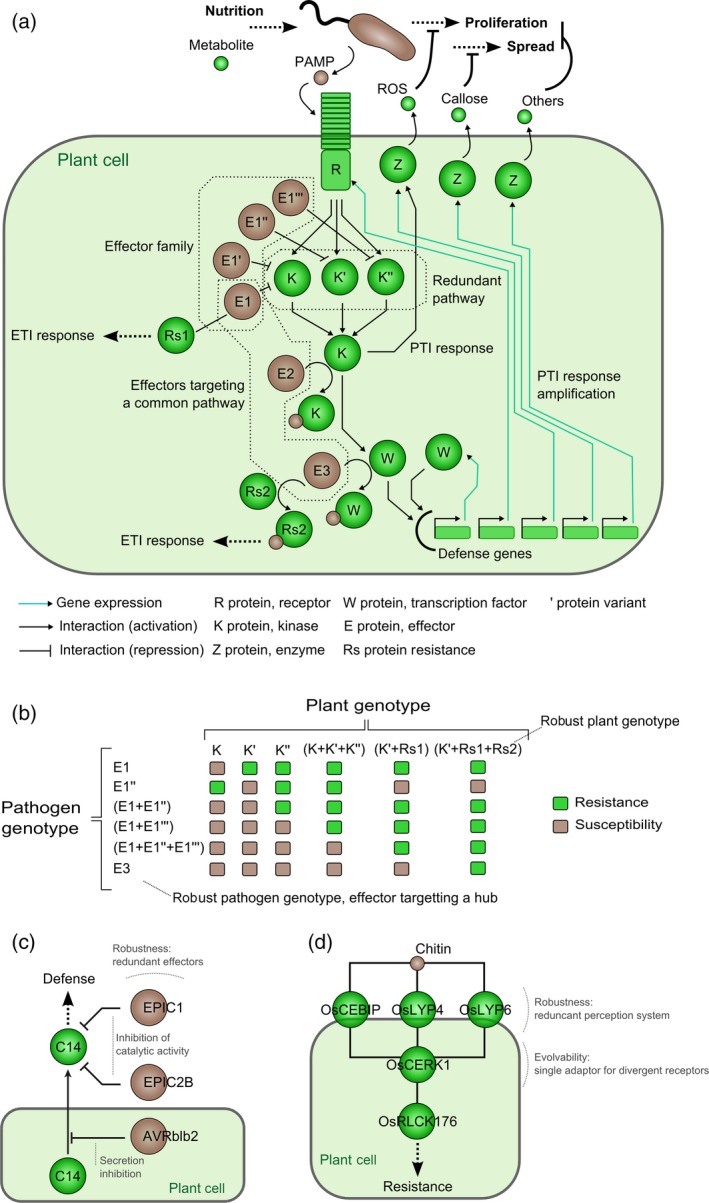Figure 7.

Robustness of plant–pathogen interaction network.
(a) The interaction between plant and pathogen involved a complex network. Here is depicted a sensing pathway recognizing the presence of the pathogen by PRR or R‐protein and the clearance of pathogen infection via PTI or ETI activation. The redundancy of pathogen effectors or plant components may provide robustness to each system.
(b) Predicted behavior of the previous toy model (a) depending of the pathogen and the plant genotypes. None of the outputs (resistance or susceptibility) can be deduced from knowledge on only one single component illustrating that plant resistance is an emergent property of the complex network of interaction between plant and pathogen.
(c) Example of robustness provided by redundancy in Phytophthora infestans effectors (EPIC1, EPIC2B and AVRblb2) that suppress the activity of tomato C14 protease.
(d) Example of robustness provided by redundancy in rice receptor (OsCEBiP, OsLYP4 and OsLYP6) that all detect fungal chitin.
